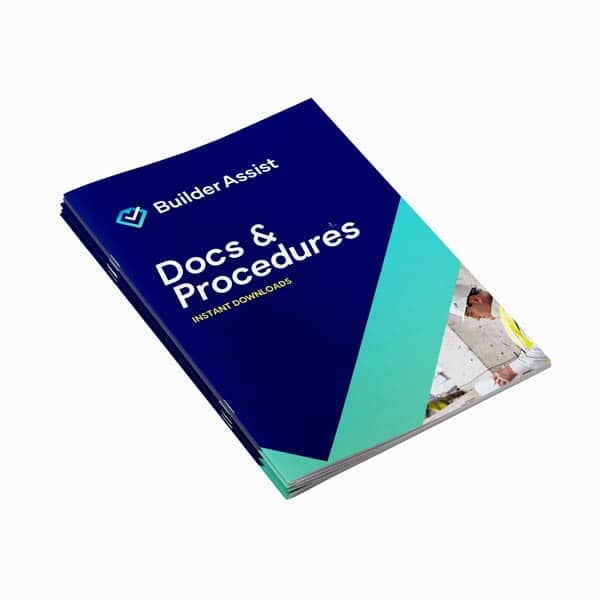
A WHS Management Plan is an important legal document that all job sites are required to have. It is also referred to as a Safety Management Plan (SMP).
It can be a long and painful process to complete a WHS Management Plan (WHSMP). Especially without experience or guidance. Builder Assist, however, provide WHS Management Plan templates to help you get started.
For a comprehensive overview on what a WHS Management Plan needs to include, read on.

Every job site has specific checklists and forms required to be filled out daily, weekly, monthly or otherwise. Among other requirements, your WHSMP will include information about these forms and checklists.
Every project has unique requirements. Therefore, at a minimum, there are a number of details that should be included in a WHS Management Plan. The list below outlines the five categories that are included in a WHSMP.
1. WHS Management Plan - Project Overview
The information included in this category provides an overview of the details of the project.
Anyone onsite during the project should have a thorough understanding of the project itself. This includes key personnel working on site, risks of the project and more. At a minimum, aim to include the following key information:
Role and Responsibilities: Outline the key personnel, their roles and responsibilities and where they sit in the chain of command.
Risk Assessment: Identify the potential hazards onsite, the risks presented and develop controls to reduce and manage risks.
Project Details & Objectives: Project details may include information about the scope of work, requirements of workers and the targets of the project. For example, achieving an incident and injury-free project.
Document Control: Outline how your WHS Management Plan will be maintained, updated, stored and accessed throughout the project.
2. Forms & Checklists
Every job site has specific checklists and forms that are required to be filled out daily, weekly, monthly or otherwise. Your SMP should include information about these forms and checklists, and copies of these should be made available to all personnel on your site. Forms and checklists may include, but are not limited to:
- Safe Work Method Statement (SWMS)
- Job Safety Analysis (JSA)
- Workplace Inspection Checklist
- Plant & Equipment Checklist
- WHS Management Plan Checklist
- Employee Induction Checklist
- Pre-start Checklist
3. Policies and procedures
Have detailed policies and procedures in place for every new project - it's a must. Policies and procedures not only safeguard your workers, they aid in the smooth-running of a project. In addition, they assist to protect the Principal Contractor for the duration of the job.
A job site’s policies and procedures may vary slightly, but here are some of the most common (and important) policies and procedures to consider:
- WHS & Environment Policy
- Manual Handling Policy & Procedure
- Plant & Equipment Policy
- Hazardous Substances, Dangerous Goods and MSDS Policy
- Hazard Reporting Policy
- Electrical Equipment Policy
- Emergency Response & Evacuation Procedures
- Injury Management & Return to Work Procedures
Cover all of your project’s policies and procedures in your SMP to ensure this information is accessible and understood by all workers onsite.
4. Site-specific information
When creating an SMP, it’s important to include details about the project that all workers need to be across. This can be anything from site safety rules, training, incident management and so on. We’ve included some key site-specific information to include in your plan:
- Site Safety Rules for both workers and visitors on site
- An outline of the Personal Protective Equipment (PPE) required to be worn on site at all times
- Manual Handling Techniques
- Training & Competency, including inductions and task-specific qualifications and tickets that key workers are required to hold
- Toolbox & pre-start talks, including frequency of meetings and topics to be covered in each meeting
- Consultation, Cooperation & Coordination. This section should cover details on internal and external communications, reporting and the process of resolving any issues on site
- Injury & Incident Investigation & Management, covering details on notifiable incidents, serious injuries and dangerous incidents and how these should be reported
5. Registers & Records
Last, but certainly not least, we’re sharing with you just some of the records and registers you might need to include in your SMP, depending on the scope of the project. Having all your documentation in one place makes it easy to find and use documents when needed, and leaves no room for misunderstanding or proper procedure not being followed:
- Site Induction Record
- Site Induction Register
- Plant & Equipment Register
- Hazardous Substances and Dangerous Goods Register
- Electrical Equipment Register
- Register of Injuries
- Incident Investigation Report
- Hazard Report
There's a lot of information to work through when putting together a WHSMP. The good news is you don’t have to do it alone! Fortunately, Builder Assist have developed a dedicated WHS Management Plan templates (or Safety Management Plan) for every trade!
If you’re a Principal Contractor looking to ease unnecessary stress in the lead up to a new project, you may want to get your hands on our Builder's WHS Management Plan.
Not sure what documents and procedures you might need in your trade? No worries! Simply visit Tradespeople Documentation. Here you can access Builder Assist’s instant downloads of documents and procedures specific to your trade.
You can also view the Work Health & Safety Regulators in your state or territory, by visiting the SafeWork Australia website.

Safety Management Plans (WHS)
Specifically designed for each trade starting up a business, these Work Health Safety Management Plans or WHS Management Plans, provide support with the management of Work Health & Safety in the workplace. Also referred to as Occupational Health & Safety (OH&S) the material provided in this section will assist with WHS/OHS management and training requirements for the workplace.



